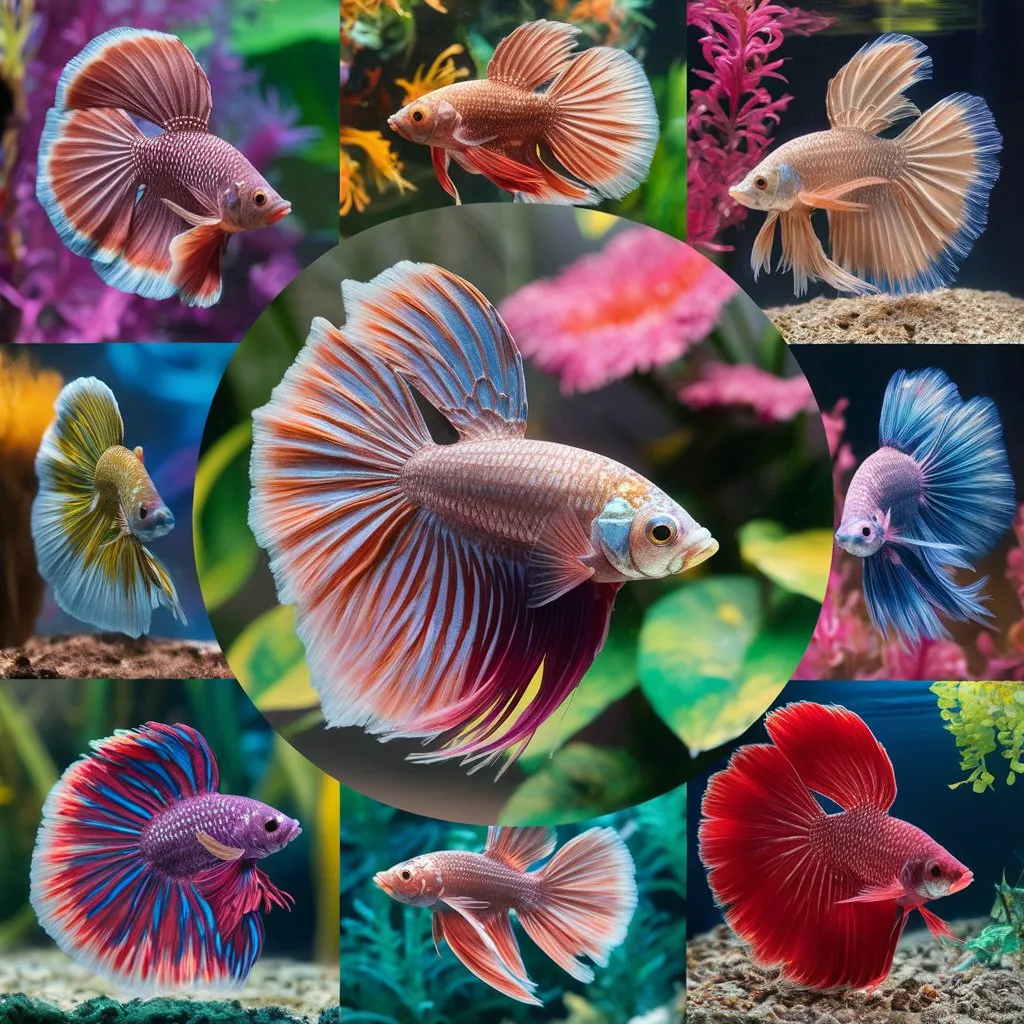Betta fish, often referred to as Siamese fighting fish, are a captivating species known for their vibrant colors, elegant fins, and intriguing personalities. While the common betta fish varieties are widely recognized, there exists a world of rare and breathtakingly beautiful betta fish that are sure to capture the hearts of aquarium enthusiasts.

Exploring The Diversity Of Rare Beautiful Betta Fish
The betta fish family boasts a remarkable diversity, with numerous color variations, fin types, and body shapes. Beyond the traditional solid-colored bettas, there are several rare and stunning varieties that are highly sought after by collectors and hobbyists.
Exotic Color Morphs
One of the most captivating aspects of rare betta fish is their vibrant and unique color patterns. From iridescent hues to striking bicolor or tricolor combinations, these fish display a mesmerizing array of colors that can range from deep royal blues to shimmering metallic tones.
Unique Fin Shapes
Alongside their vivid colors, rare betta fish often feature distinctive fin shapes that set them apart from their more common counterparts. These include the graceful, flowing fins of the Plakat betta, the majestic and flowing fins of the Halfmoon betta, and the intricately ruffled fins of the Rosetail betta.
Rare and Endangered Subspecies
In addition to the color and fin variations, there are several rare and endangered betta subspecies that are prized by collectors. These include the Betta imbellis, known for its unique crescent-shaped caudal fin, and the Betta rubra, a stunning species with a deep red coloration.
Caring For Rare Betta Fish
Owning a rare betta fish comes with its own set of challenges and considerations. These delicate creatures often require specialized care and attention to thrive in captivity.
Habitat Requirements
Rare betta fish typically need larger, heavily-planted aquariums with precise water parameters to maintain their health and vibrant colors. Providing the right environment is crucial for their long-term well-being.
Feeding and Nutrition
A balanced diet rich in high-quality protein, vitamins, and minerals is essential for rare betta fish. These fish have specific feeding requirements that may differ from their more common counterparts.
Breeding and Preservation
Preserving the genetic diversity of rare betta fish is a significant challenge. Responsible breeding practices and conservation efforts are crucial to ensure the survival of these unique and captivating species.
What Are The Best Practices For Breeding Rare Betta Fish?
Here are some best practices for breeding rare betta fish:
- Start with Healthy, High-Quality Breeders: Select mature, healthy male and female betta fish that exhibit the desired traits you want to propagate, such as unique color patterns, fin shapes, or body types. Avoid using fish with genetic defects or health issues.
- Provide Optimal Breeding Conditions: Set up a dedicated breeding tank with clean, warm (around 78-82°F), well-oxygenated water. Ensure the tank is densely planted to provide cover and stimulate natural breeding behaviors.
- Condition the Breeders: Feed the male and female betta fish a high-protein diet for several weeks prior to spawning to ensure they are in peak physical condition. Live foods like brine shrimp and bloodworms are excellent choices.
- Introduce the Pair Carefully: Acclimate the male and female to the breeding tank separately first. Then, introduce them gradually, observing for signs of aggression. Remove the female if the male becomes overly aggressive.
- Facilitate Bubble Nest Building: Provide floating plants, Styrofoam, or other materials that allow the male to build a bubble nest. This is an important precursor to successful spawning.
- Monitor the Spawning Process: Once spawning begins, do not disturb the pair. The male will fertilize the eggs and tend to the bubble nest. Remove the female after spawning to prevent her from eating the eggs.
- Maintain the Egg Nest: Gently remove any fungused or unfertilized eggs from the nest. Keep the water clean and well-oxygenated to support the developing fry.
- Provide Proper Fry Care: Once the fry hatch, feed them small, frequent meals of powdered fry food or infusoria. Perform partial water changes regularly to maintain water quality.
- Cull Unhealthy Fry: Carefully monitor the fry and remove any that exhibit deformities or poor health to maintain the overall quality of the bloodline.
- Selective Breeding: Over multiple generations, continue to select and breed the betta fish with the most desirable traits to gradually improve the rare strain.
Proper care, nutrition, and selective breeding are key to successfully propagating rare and unique betta fish varieties.
Conclusion
Exploring the world of rare and beautiful betta fish with Betta Fish 247 is a captivating journey for aquarium enthusiasts. These remarkable creatures offer a glimpse into the fascinating diversity of the betta fish family and the dedication required to care for them. Whether you’re a seasoned collector or a newcomer to the hobby, the enchanting beauty of rare betta fish is sure to leave a lasting impression.

Related Posts
The Record-Breaking Prices of the Most Expensive Betta Fish
Understanding Aquarium Fish Size
Understanding the Largest Biggest Betta Fish Species